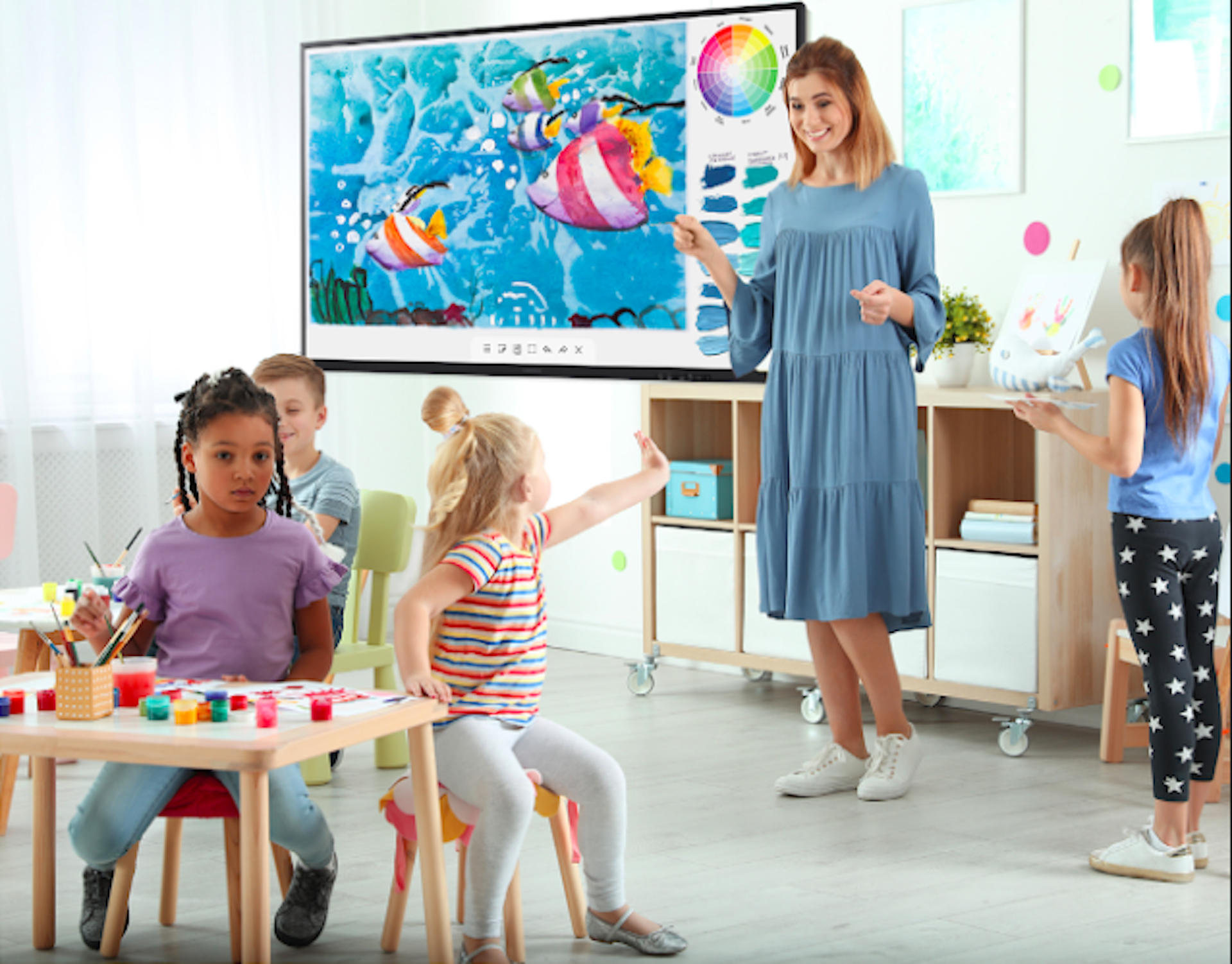Digitally native children are coming into classrooms already accustomed to communicating and learning through technology. Educators need to adapt accordingly with tools and strategies that incorporate and optimize it for students and teachers alike.
Next-generation, interactive classroom technology, such as the Samsung Interactive Display, helps make learning more fun, collaborative and inclusive. In today’s educational environments — which may include in-class and at-home instruction simultaneously — effective teaching technology is of critical importance.
Mounted to the front wall of a classroom or lecture hall, an interactive display allows educators at all school levels to enhance how they teach and interact with students. Here are six ways the Samsung Interactive Display achieves that.
1. Flexible connectivity and navigation
The Samsung interactive whiteboard is designed for diverse educational purposes, with multiple options for connecting and interacting. A 3-in-1 USB-C port enables screen mirroring, touch control and external device charging (max. 65W).
With the display’s Android 11 OS, teachers can also navigate easily through learning apps and online resources with built-in internet connectivity and web browsing. Students can look up websites and annotate them right on screen, while teachers do the same with online open educational resources.
2. More touchpoints for more students
Conventional collaboration tools like dry-erase boards are typically limited to one or two users at a time, but smart boards and their integrated technology can support a group of people at the same time, helping them develop and note their ideas together in real time. In fact, a Samsung classroom touchscreen display can accurately track as many as 20 simultaneous users.
3. More engaging means and material
Chalk and dry-erase markers can do the basics, but the creative tools built into interactive whiteboards can garner attention and engagement. Writing with a stylus allows for a variety of colors, styles and widths — and feels like writing on paper. With the dual pen function, users can switch between two different colors on the front and back sides of the pen without pausing to change settings. There’s equal flexibility with images, which can be captured, cropped and edited right on screen. Kids can enhance these visuals, too, with editing tools or create original work in watercolor and oil painting modes.
Read the definitive guide on interactive displays
See how educators can create an inclusive learning environment with the right technology. Download Now
4. After-class sharing
Not only can educators easily push work from other computing devices to the interactive classroom display, but they can save the files and distribute them via cloud storage services such as Google Drive or Microsoft Azure, whether it’s class notes, lists, drawings, PDFs or updated documents from Office 365 apps — giving students easy access to them after the class is done. For students learning remotely, sharing information from the smart board is as simple as emailing the recap files directly from the display or storing them on the school network to be retrieved as needed.
5. Safe and secure
The Samsung Interactive Display’s underlying security ensures confidential information stays in the right hands. A reinforced six-digit lock system allows educators to easily safeguard sensitive content, lock the display and remove sensitive content from view. The device can also be configured to regularly delete old files. With Samsung Remote Management Solution, IT teams can also control critical display settings from afar, with options including turning the display on and off, changing PINs, locking the network or USB port and adjusting proxy server settings.
6. Always-on administration
The Samsung Interactive Display is always working and communicating, even when the teachers and students are away. Prebuilt templates such as calendars, assignment reminders, birthday wishes and safety tips can operate 24 hours a day, sending notifications as needed. Classroom screens also double as digital signage, lighting up in screensaver mode to display images, messages and other media as needed.
Discover more about how to enhance learning with the Samsung Interactive Display, and explore flexible lesson templates tailored for digital learning in remote or classroom environments.







